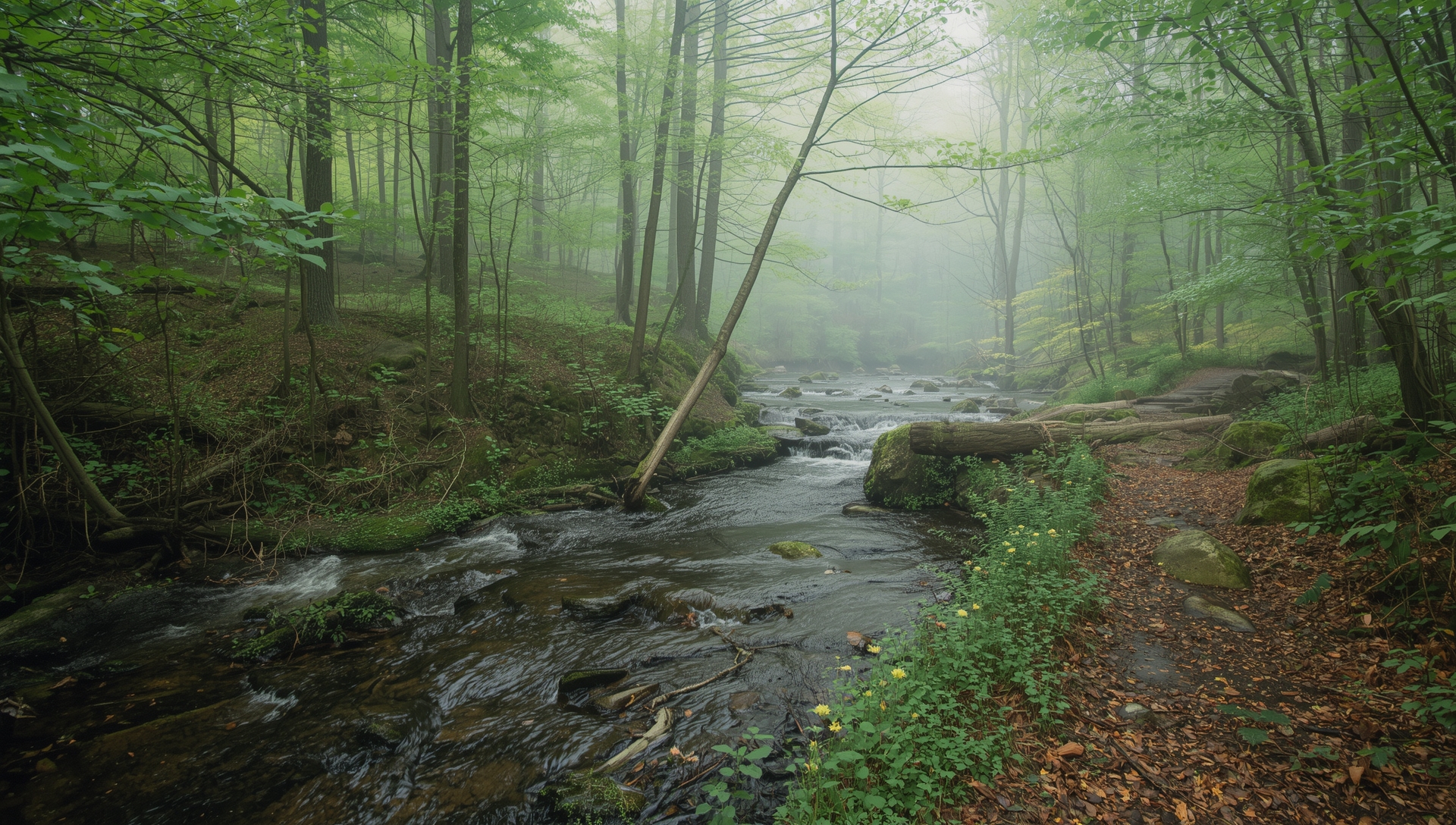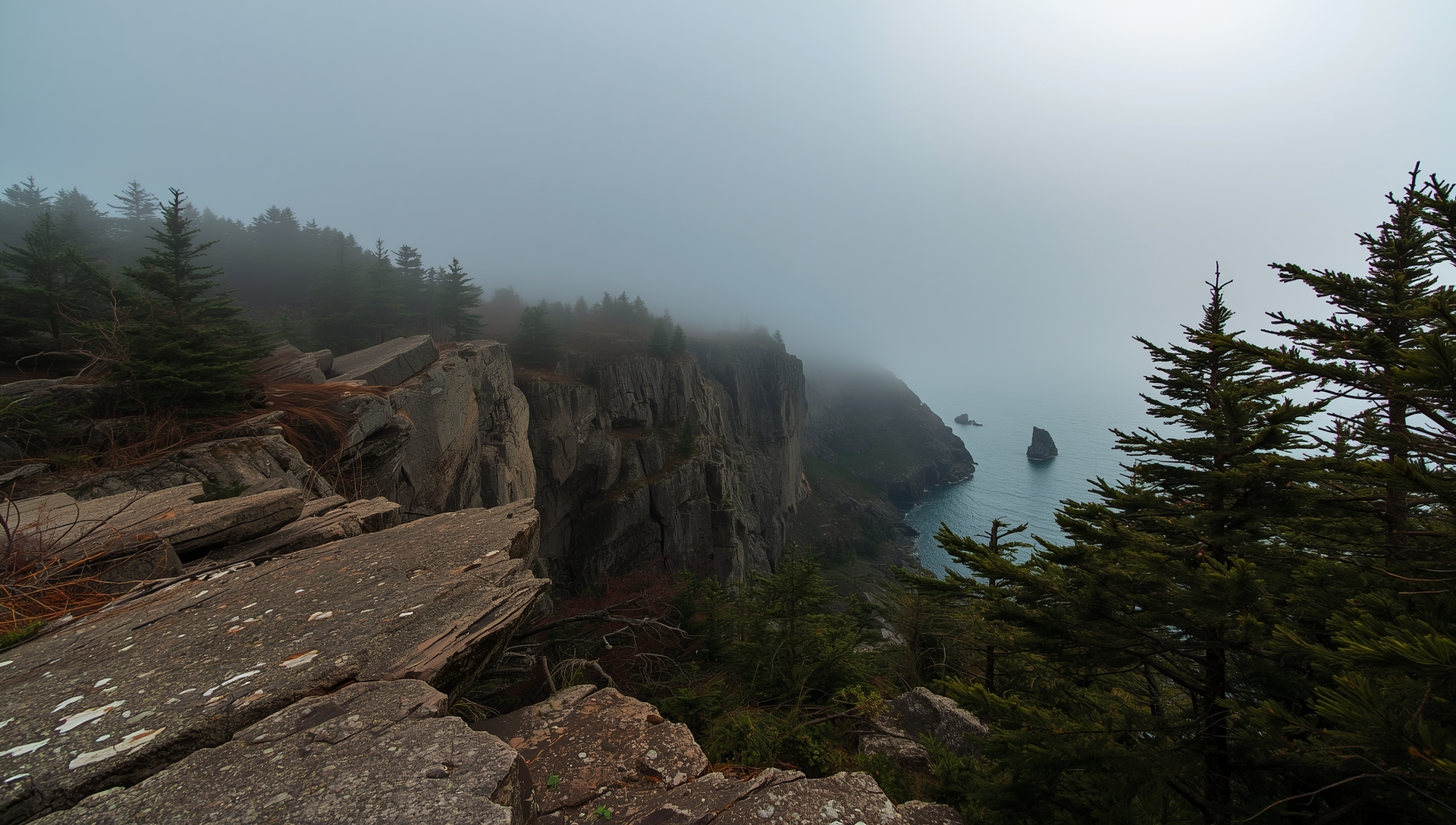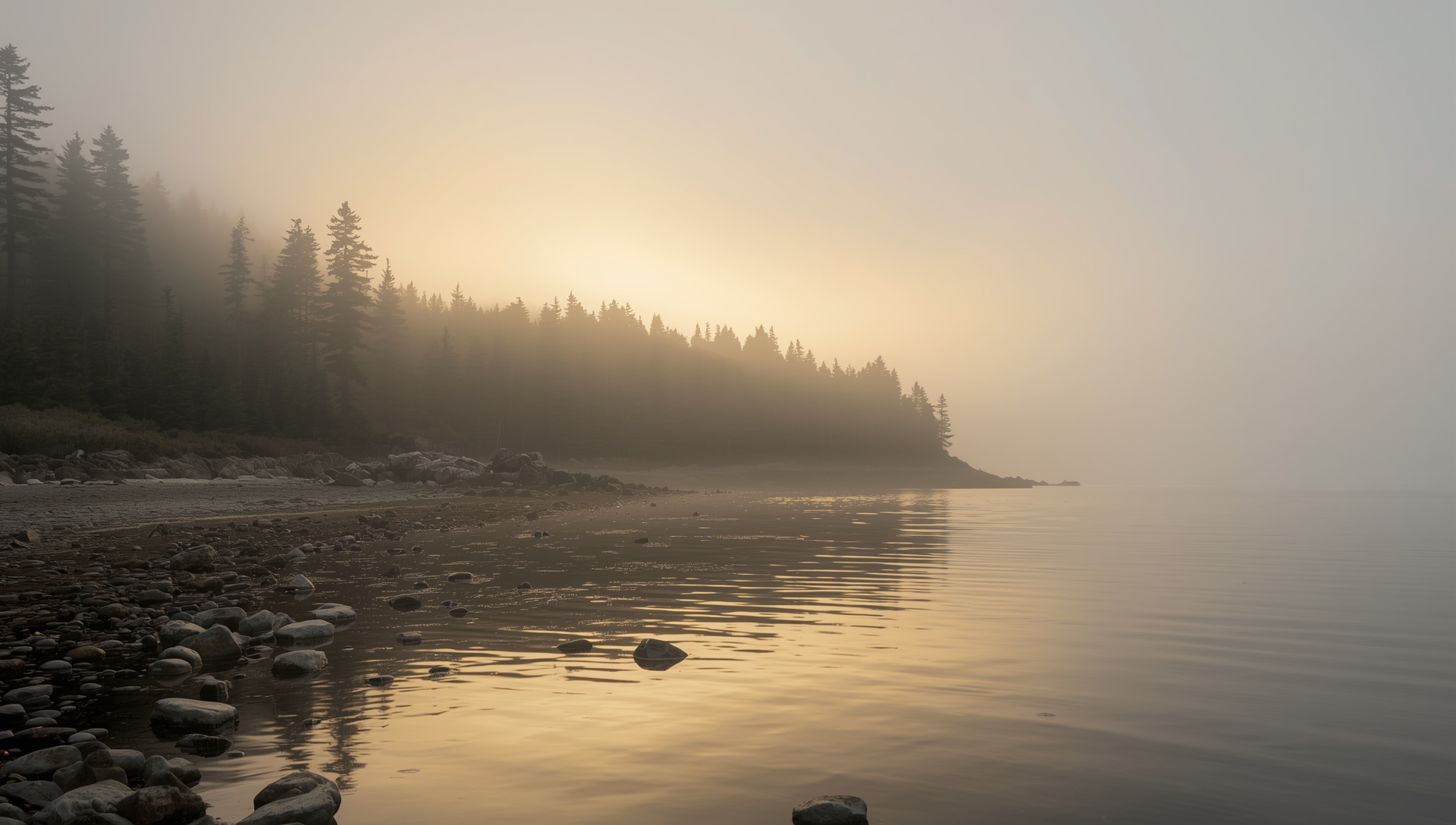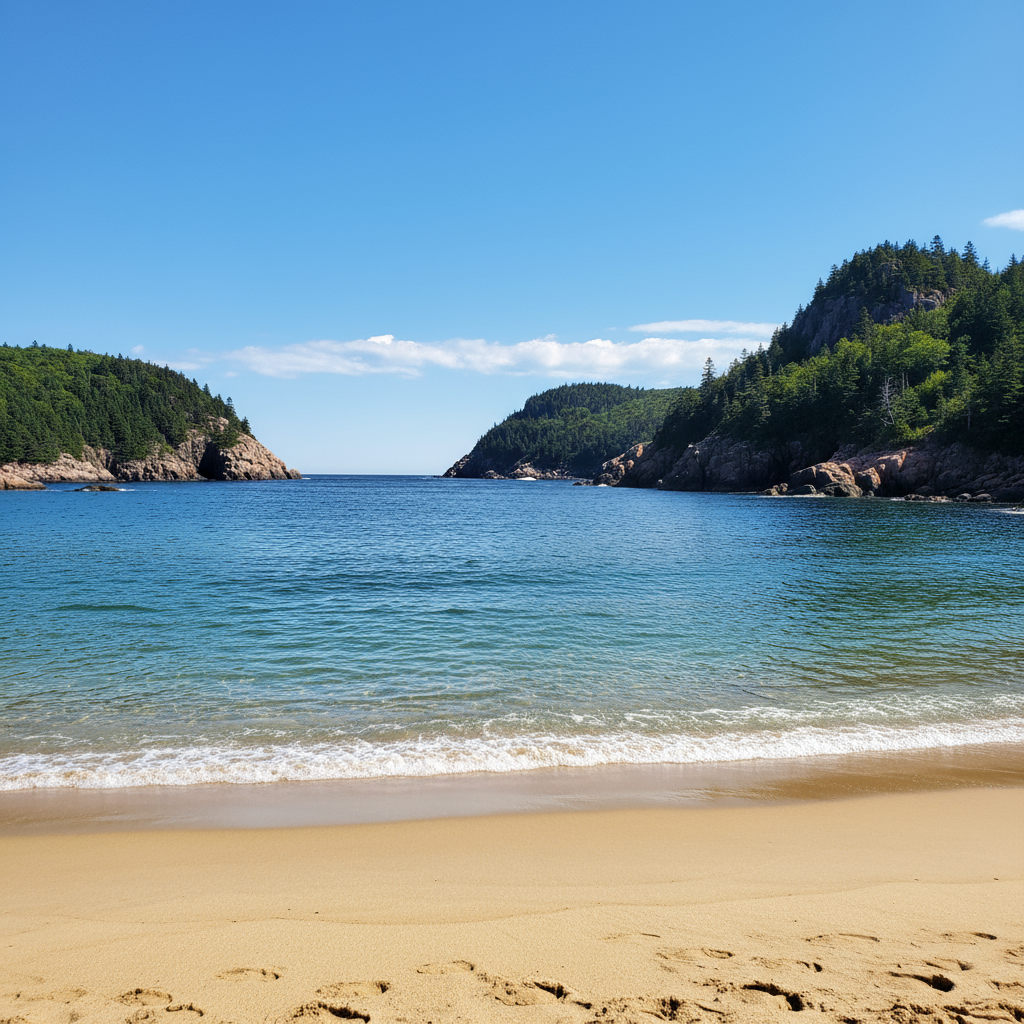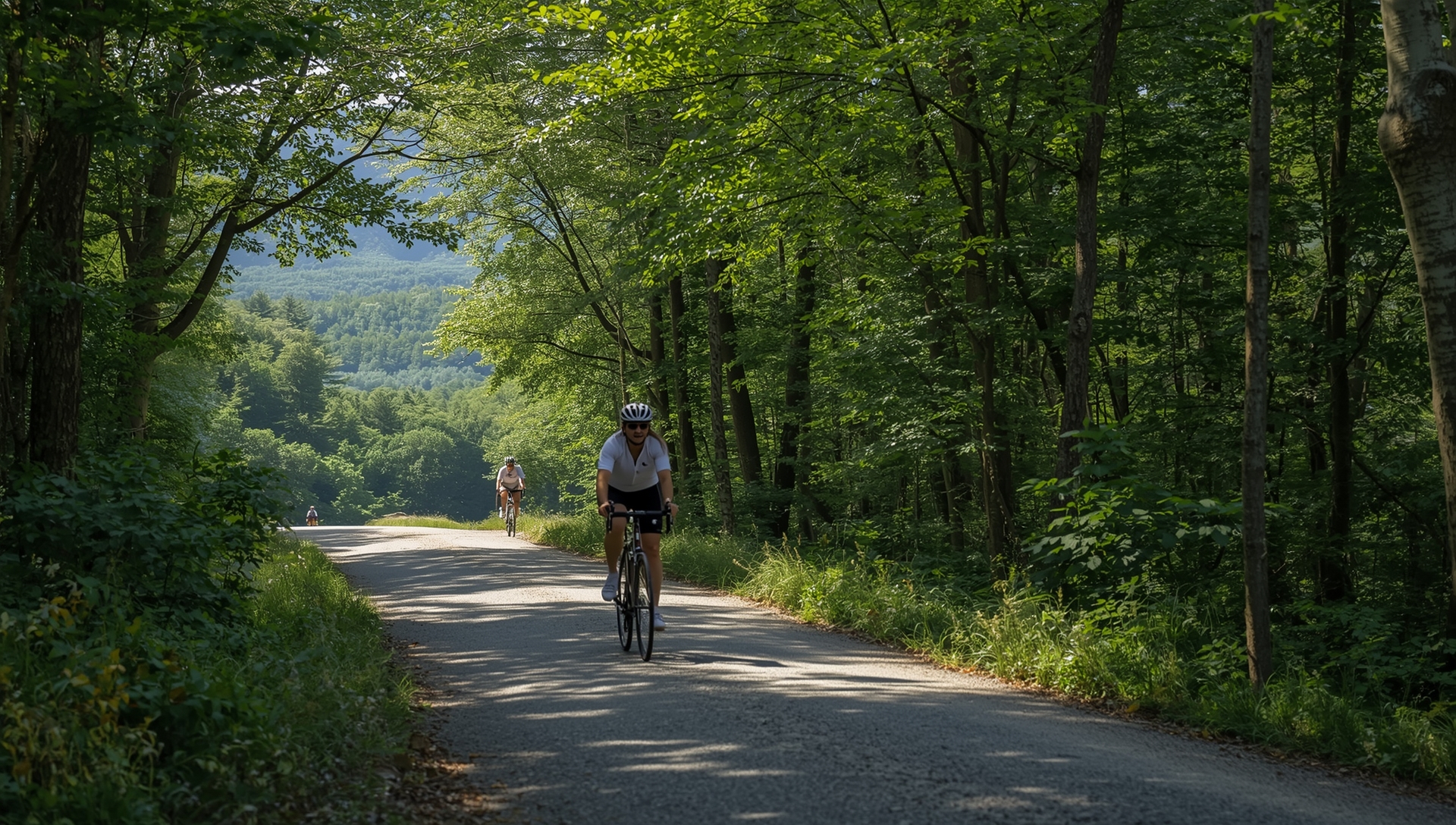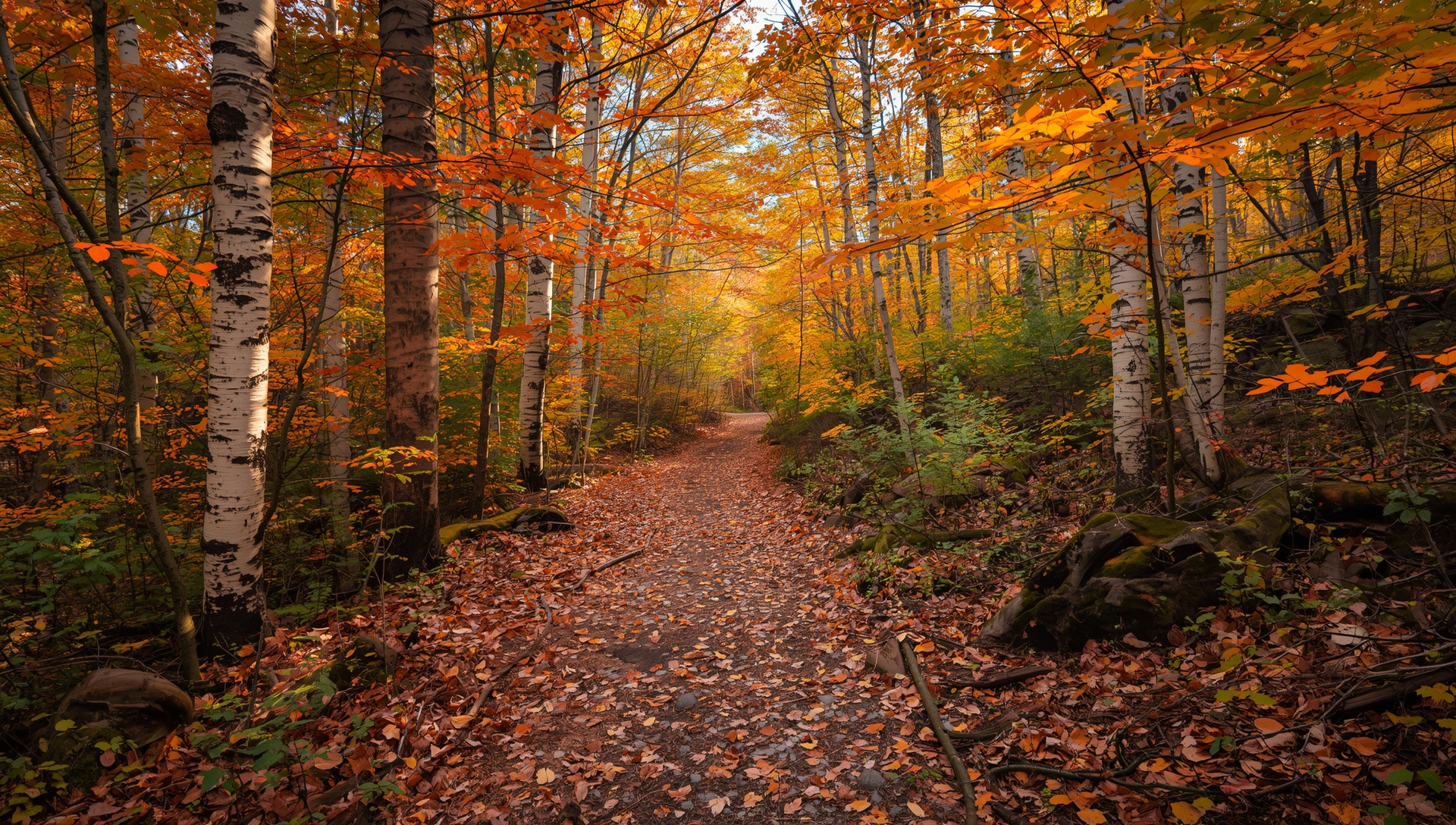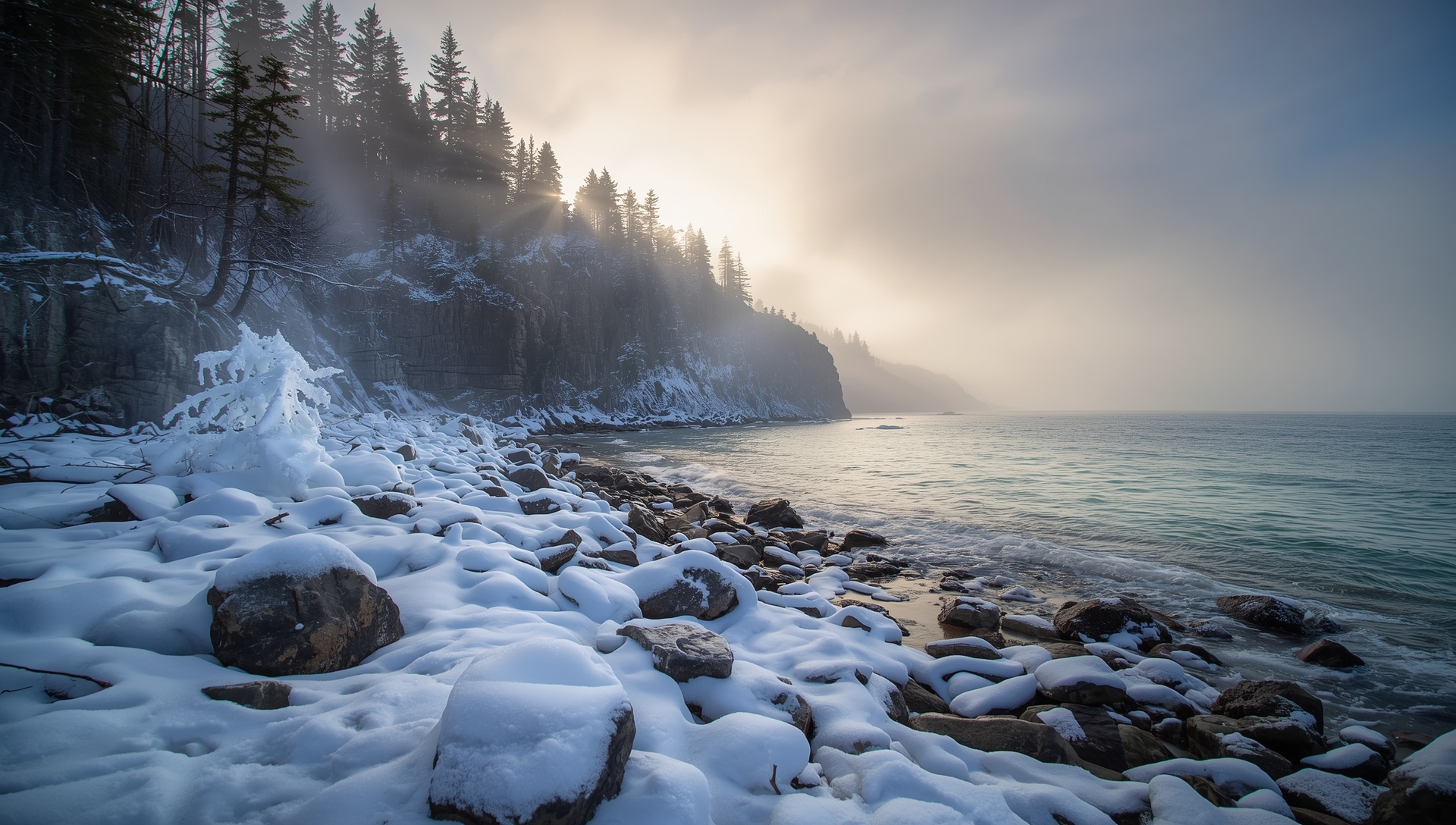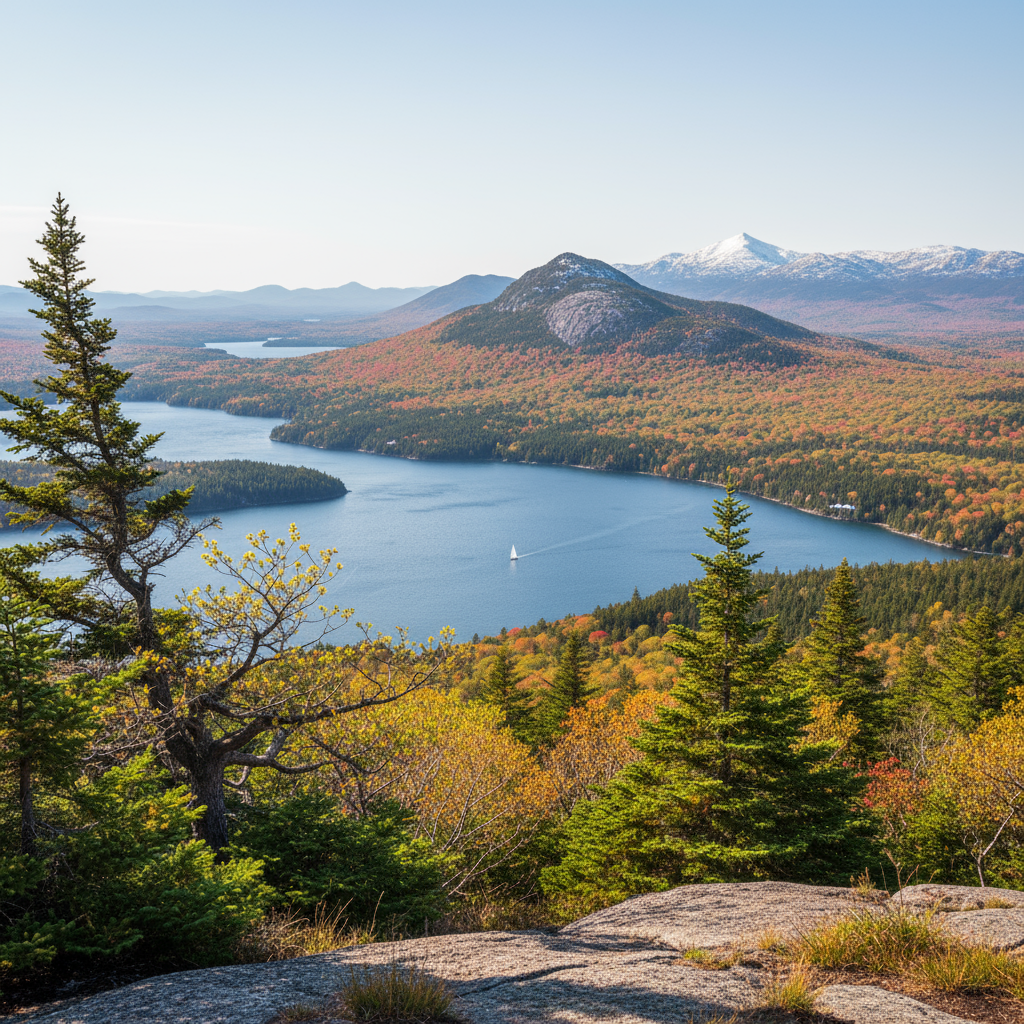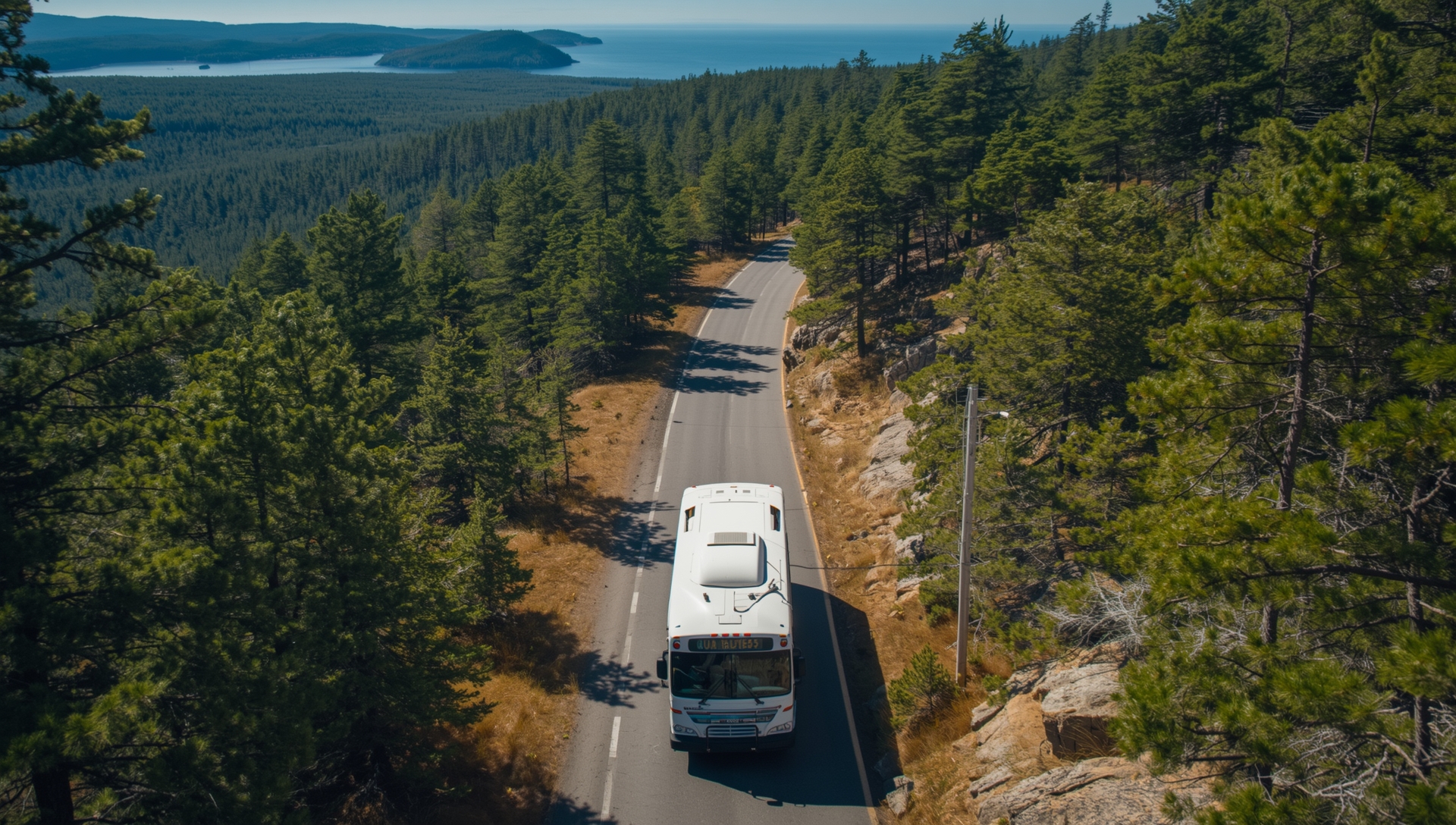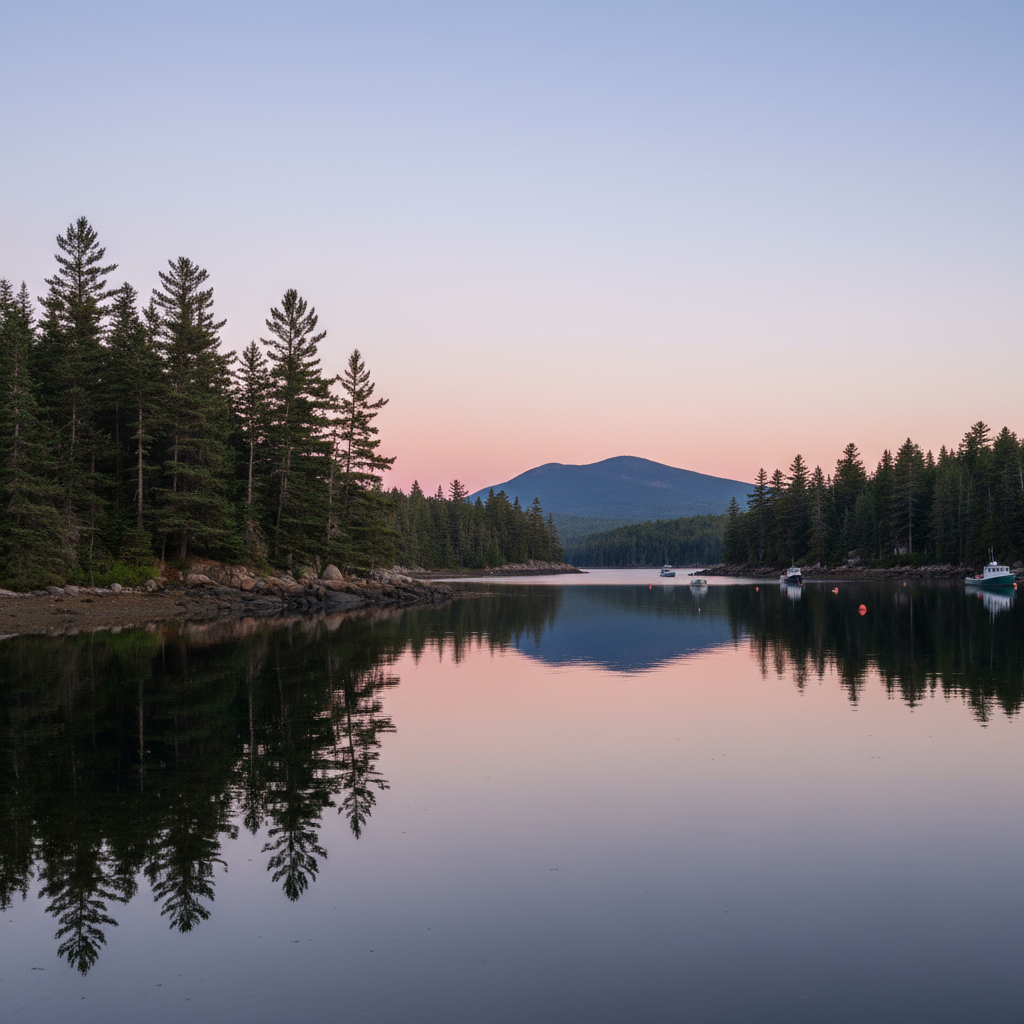Best Time to Visit Acadia
First Things First: The Best Time to Visit Acadia
Choosing the best time to visit Acadia National Park isn’t just about checking the forecast — it’s about finding the version of Acadia that matches your style of adventure. Perched on Maine’s dramatic coast, this park transforms completely with each passing season. From misty spring mornings to fiery autumn cliffs, Acadia’s weather gives every visit its own distinct personality.
In spring, waterfalls surge with snowmelt, trails reopen, and carpets of wildflowers line the paths. The days are cool, the air smells fresh, and the crowds are few — ideal for hikers and photographers who love quiet trails and the hum of renewal. When summer arrives, Acadia shifts into full vibrancy. The long daylight hours invite swims at Sand Beach, scenic rides along the carriage roads, and sunrise climbs up Cadillac Mountain. Evenings in Bar Harbor hum with the rhythm of coastal life, alive with street music, seafood, and sea breeze.
By fall, Acadia reaches its peak. Hillsides ignite with color, from the deep reds of maples to the golden shimmer of birches. The crisp air and thinning crowds make it a favorite for both locals and travelers chasing that perfect Acadia in the fall moment. Then winter drifts in, soft and silent, cloaking the park in snow. This is the secret season — peaceful, pristine, and perfect for those who love the solitude of Acadia National Park in winter.
Whatever your season, Acadia Maine weather shapes the park’s moods in fascinating ways. Sunshine, fog, and ocean winds blend together to create a landscape that never looks the same twice. Whether you crave the color and energy of summer or the calm of winter’s stillness, Acadia National Park always rewards you with something unforgettable — a moment when the landscape and the weather align just right.
🌦️ Traveler Tip: When Weather Makes All the Difference
Acadia’s changing weather is part of its magic. The best time to visit Acadia often depends on what kind of experience you’re chasing — wildflower hikes, warm beach days, fiery foliage, or peaceful snow trails.
- Spring: Cool and quiet with melting snow and rushing waterfalls — a great time to see the park awaken.
- Summer: Warm, bright, and lively — perfect for swimming at Sand Beach or hiking Cadillac Mountain at sunrise.
- Fall: The most photographed season — crisp mornings, calm winds, and iconic Acadia fall foliage.
- Winter: A calm and snowy landscape — ideal for solitude and exploring Acadia National Park in winter.
Always check the latest Acadia Maine weather or Acadia National Park forecast before you go to make sure you're selecting the best time to visit Acadia — the coast’s quick shifts between fog, sun, and sea breeze are part of what makes this place unforgettable.
How the Seasons Shape Acadia National Park
The beauty of Acadia National Park is that it never stands still. With each passing season, the landscape transforms — shaped by wind, sunlight, and the ever-changing Acadia Maine weather. To know the park is to understand its rhythm: when the fog rolls in, when the leaves flare into gold, when the snow softens every sound. Timing your visit around these shifts makes all the difference between a good trip and an unforgettable one.
In spring, Acadia feels newly awakened. Snowmelt rushes down the granite slopes, feeding waterfalls and forest creeks. Trails reopen, and the forests around Jordan Pond and Hadlock Brook come alive with ferns, violets, and trillium. Mornings can be cool and misty, but by afternoon, shafts of sunlight break through the fog and sparkle on wet rocks. For photographers, this is Acadia at its most delicate — soft greens, filtered light, and the quiet energy of renewal.
Summer is Acadia’s high season — long days, blue skies, and a steady hum of exploration. Warm air meets the cold Atlantic, producing that famous coastal haze that drifts over the cliffs near Thunder Hole and Otter Point. While midday can feel busy around Cadillac Mountain and Sand Beach, early mornings and evenings reward you with calm light and sea breezes. The weather in Acadia National Park during summer is reliably pleasant, though brief showers sometimes sweep through and vanish as quickly as they came.
By fall, the park’s palette explodes. Maple and birch forests ignite in fiery reds and golds, mirrored on still lakes like Eagle Lake and Bubble Pond. Cooler temperatures and lighter crowds make this a favorite time for hiking and photography. The crisp air brings extraordinary clarity to the views from Beehive Mountain or Gorham Mountain, and the ocean sparkles under low-angled light. For many travelers, this is the best time to visit Acadia — that perfect balance of color, comfort, and calm.
Then winter descends, transforming Acadia into a peaceful, snow-covered retreat. The park’s carriage roads become silent trails for cross-country skiing and snowshoeing, and wildlife tracks crisscross the frozen ground. The Acadia National Park weather in winter is cold but magical — frost-rimmed forests, icy ponds, and a quiet that feels ancient. It’s a time when the park belongs entirely to those who seek solitude and stillness.
No matter when you visit, Acadia’s weather defines its character. The same cliffs, forests, and lakes can appear gentle one day and wild the next. That’s the secret to Acadia’s enduring pull: it’s never the same park twice. Whether you come for the blooming of spring, the glow of autumn, or the hush of winter, every season here tells a new story — written in wind, water, and light.
🍃 Season Snapshot: The Changing Face of Acadia
Every season in Acadia National Park tells a different story. Spring brings new life and rushing streams; summer glows with long daylight and ocean breezes; fall blazes with color; and winter slows everything to a peaceful hush. Understanding how the Acadia Maine weather shifts through the year can help you plan the perfect visit — whether you’re chasing wildflowers, warm beaches, or snow-dusted solitude.
- Spring: Cool mornings, misty forests, and melting snow feeding waterfalls.
- Summer: Warm days with coastal fog and brilliant blue skies over the Atlantic.
- Fall: Crisp air, vivid foliage, and clear light perfect for photography.
- Winter: Frosted forests, frozen ponds, and serene, crowd-free trails.
Before setting out, check the latest Acadia National Park weather forecast to make the most of your time in Maine’s most captivating landscape.
Acadia in Spring (March–May)
Acadia in Spring is like watching the park wake gently from a long rest. Waterfalls surge with snowmelt, songbirds return to the forests, and a delicate green begins to spread across the granite slopes. It’s a season of renewal — the moment when Acadia National Park sheds its winter stillness and breathes color back into its valleys, trails, and shorelines. While summer draws the biggest crowds, spring belongs to those who crave calm and authenticity. With fewer visitors and softer light, you’ll often feel as if you’ve stumbled into your own private park.
Along the carriage roads and forest paths near Jordan Pond and Hadlock Brook, trickling streams echo through the still air. Moss clings to boulders, and the first wildflowers — trillium, bluets, and violets — peek through damp leaves. Bar Harbor, too, begins to stir from hibernation as small shops reopen, cafés set out tables, and boats return to the harbor. Even on cooler days, there’s a sense of anticipation in the air, as if the park and town alike are stretching toward the warmth to come.
The Acadia Maine weather in spring can be unpredictable, but that’s part of its beauty. Temperatures usually range from 40–65°F (4–18°C), and the mood can swing quickly from sunshine to mist. Morning fog often lingers over Frenchman Bay, while afternoons clear into bright skies perfect for walking the coastline. A lightweight rain shell and layered clothing are essentials — not to fight the weather, but to flow with it. Rain showers keep the forests fresh, waterfalls strong, and the air crisp and fragrant with pine.
For hikers, early spring is best spent on lower-elevation trails such as Ocean Path, Wonderland Trail, or Ship Harbor. The higher peaks, like Cadillac Mountain and Dorr Mountain, may still hold icy patches into April, but by May most routes are clear. The Park Loop Road typically reopens mid-April, offering the freedom to explore more corners of Mount Desert Island. Biking the carriage roads is also ideal at this time — the gravel is firm, the air is cool, and traffic is almost nonexistent.
Spring also belongs to photographers and birdwatchers. The soft morning fog gives the landscape a painterly look, while early migrants like warblers, loons, and eagles return to the park’s forests and ponds. With fewer people around, you can linger at Thunder Hole or Sand Beach, capturing the interplay of mist and light that defines this shoulder season. The still water of Jordan Pond reflects the surrounding hills with mirror-like calm, often framed by just the faintest bloom of new life.
Why visit Acadia in spring? For peace and perspective. It’s the best time to hear the sound of waterfalls without the hum of traffic, to climb Cadillac Mountain at sunrise without the crowds, and to feel like you’ve discovered a secret side of one of America’s most beloved parks. Spring rewards patience and curiosity — two qualities that match the park’s slower pace perfectly.
Whether you wander through misty woods, photograph reflections in still water, or simply breathe in the scent of wet earth and pine, Acadia National Park in spring invites you to slow down and savor the details. It’s a quieter kind of wonder — one that feels less like a destination and more like a rediscovery.
🌸 Spring Snapshot: Acadia Awakens
Visiting Acadia in spring means experiencing the park’s quietest and most refreshing season. Waterfalls surge, moss glows bright green, and the cool Acadia Maine weather keeps hiking comfortable. By May, most roads and trails are open, and the park’s wildlife returns in full voice.
- Average Temperatures: 40–65°F (4–18°C)
- Best For: Waterfalls, photography, birdwatching, and quiet hiking
- What to Bring: Waterproof boots, layers, rain shell, and camera
- Pro Tip: Arrive early for sunrise at Cadillac Mountain — spring skies often glow through morning mist.
Check the latest Acadia National Park spring weather forecast before heading out — Maine’s coastal climate can shift from fog to sunshine in minutes.
Acadia National Park in Summer
(June–August)
Acadia National Park in summer is when Maine’s crown jewel shines its brightest. The coastline glows under long daylight hours, the forest hums with life, and every trail, campground, and harbor feels alive with energy. It’s the season when the park runs at full capacity — all campgrounds open, all visitor centers staffed, all roads clear — inviting travelers to experience Acadia at its most vibrant and complete.
The Acadia Maine weather in summer is warm and welcoming, with temperatures typically between 55–80°F (13–27°C). Mornings are cool and crisp, perfect for early hikes or scenic drives along Park Loop Road. By midday, the ocean air feels fresh rather than heavy, thanks to steady breezes that roll in from Frenchman Bay. Evenings cool down quickly, and the scent of pine and saltwater lingers in the twilight — an ideal setting for beach walks or campfires under starry skies.
Summer brings the widest range of activities of any season in the park. You can swim at Sand Beach or Echo Lake, kayak along the rocky shoreline, or join a ranger-led program that uncovers the park’s geology, wildlife, and conservation stories. The famous carriage roads are at their best in summer, dry and shaded, inviting long bike rides beneath the forest canopy. For those who prefer the water, scenic boat tours and ferries to nearby islands offer fresh perspectives on the park’s rugged beauty.
It’s also the busiest time of year. Bar Harbor hums with visitors exploring its cafés, art galleries, and harborfront shops, while trailheads like Jordan Pond, Cadillac Mountain, and Beehive Trail can fill quickly. Arriving early or planning for sunrise and sunset excursions helps you find breathing room even during peak season. The reward is extraordinary — sunrise from Cadillac Mountain during summer is among the most iconic sights in New England, painting the ocean and islands in pink and gold.
Despite the crowds, there’s something undeniably joyful about summer in Acadia. Families gather at picnic tables, kids chase waves at Sand Beach, and couples share quiet moments overlooking the sea cliffs near Thunder Hole. Every part of the park feels alive, yet it still offers moments of peace for those who venture a bit off the main routes. Trails like Wonderland or Ship Harbor provide gentler escapes where seabirds call and the only sound is the surf brushing against the rocks.
Why visit Acadia in summer? Because this is the park’s full symphony — open, abundant, and unforgettable. It’s the time when Acadia offers its greatest variety of experiences, from sunrise hikes to moonlit tides. For first-time visitors or returning travelers seeking the classic Maine experience, summer delivers Acadia at its grandest — a celebration of warmth, wilderness, and the simple joy of long, golden days by the sea.
☀️ Summer Snapshot: Acadia at Full Swing
Visiting Acadia National Park in summer means experiencing the park at its liveliest. Warm days, cool ocean breezes, and long daylight hours make it the best season for classic Maine adventures. From biking the carriage roads to swimming at Sand Beach, summer in Acadia blends energy and relaxation perfectly.
- Average Temperatures: 55–80°F (13–27°C)
- Best For: Hiking, swimming, boating, photography, and family vacations
- What to Bring: Light clothing, sturdy footwear, and a jacket for cool evenings
- Pro Tip: Arrive early for Cadillac Mountain sunrise or visit popular trails near dusk for fewer crowds and golden light.
Stay updated with the Acadia National Park summer weather forecast — Maine’s coastal climate can shift from sunshine to sea mist in a heartbeat, so you can be sure to select the best time to visit Acadia
Acadia in the Fall (September–November)
If you’ve ever seen Acadia in the fall, you’ll know why so many travelers call it the best time to visit Acadia. From late September through October, the park transforms into one of the most breathtaking autumn landscapes in America. The forests of Mount Desert Island ignite in color — maple, birch, and oak trees paint the hillsides in shades of crimson, gold, and amber, while evergreens add contrast along the ridgelines. Every turn along Park Loop Road or every step up a mountain trail reveals another postcard-worthy view.
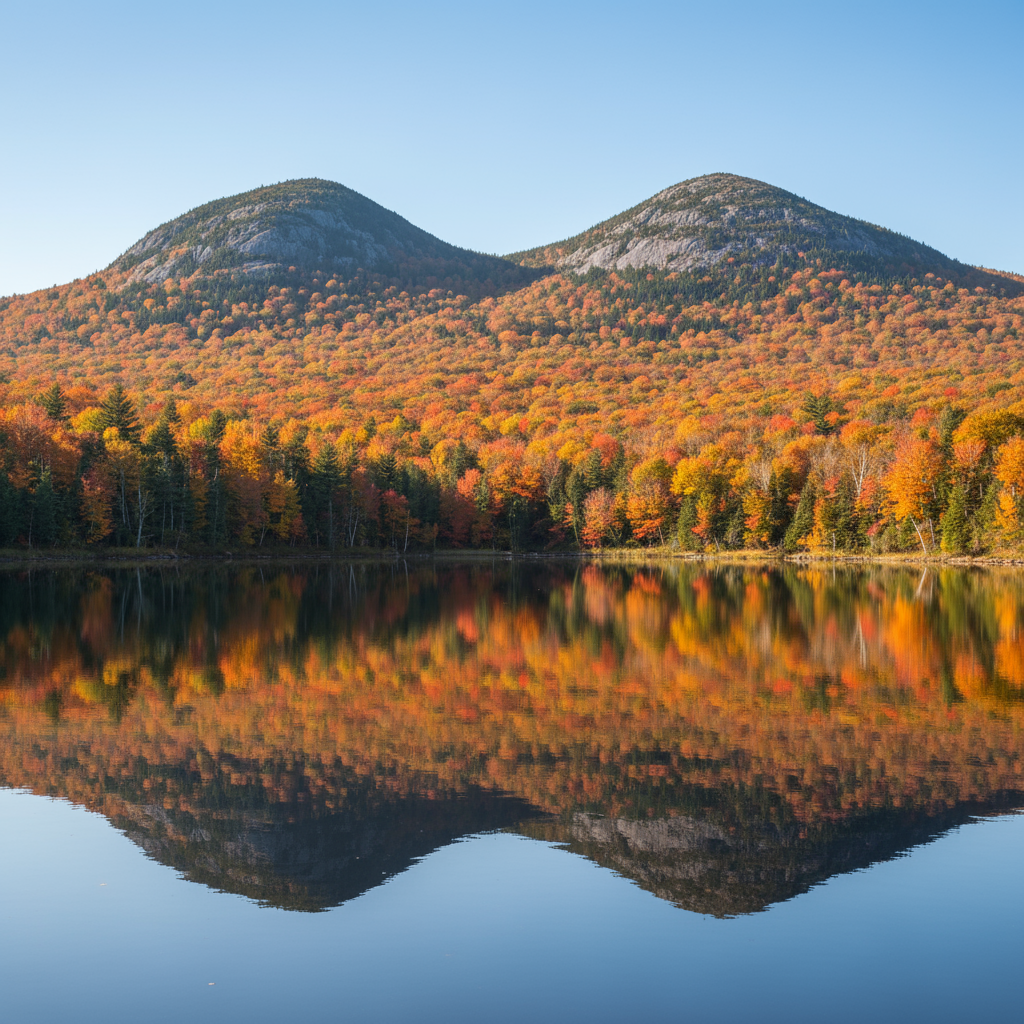 Acadia in the fall with brilliant foliage, crisp hiking weather, and iconic New England views
Acadia in the fall with brilliant foliage, crisp hiking weather, and iconic New England viewsThe Acadia Maine weather in fall brings crisp air and deep blue skies, ideal for hiking and photography. Daytime temperatures usually range between 45–65°F (7–18°C), and nights cool quickly, sometimes dipping near freezing by late October. The lower humidity of summer gives way to clarity and freshness — the kind of weather that makes you want to stay outdoors from sunrise to sunset. Pack layers, as mornings can feel brisk, especially near Cadillac Mountain or along the windy coastlines.
Fall is one of the best seasons for hiking in Acadia National Park. Trails like Jordan Pond Path, Gorham Mountain, and Bubble Rock Trail provide sweeping views of fall foliage reflected in lakes and ponds. The contrast of orange leaves against granite cliffs and cobalt water is nothing short of spectacular. For photographers, sunrise at Cadillac Mountain or sunset over Bass Harbor Head Lighthouse deliver unforgettable light and color. Even a casual stroll through the woods near Sieur de Monts rewards visitors with quiet beauty — the crunch of leaves underfoot and the scent of pine mixed with autumn air.
Compared to summer, fall brings lighter crowds, making it easier to find solitude on popular trails or parking near scenic lookouts. Bar Harbor retains its coastal charm but slows its pace just enough for visitors to enjoy festivals, farmers’ markets, and fall menus featuring local lobster and pumpkin treats. The seasonal rhythm feels balanced — still lively, yet more relaxed — giving you the sense that the park belongs to those who truly come to appreciate it.
Driving through the park during fall is an experience in itself. The Park Loop Road and Somes Sound Scenic Byway wind past cliffs, lakes, and valleys glowing with foliage. Every few miles offers a new vantage point — reflections on Eagle Lake, golden light over Jordan Pond, or fiery canopies framing the Atlantic. Whether you stop at Thunder Hole or continue toward Otter Cliff, the mixture of ocean mist and fall color feels almost magical.
Why go in fall? For the pure, iconic beauty of New England at its peak. Acadia National Park in fall captures everything that makes autumn in Maine unforgettable: vivid colors, crisp air, peaceful trails, and a sense of calm after the summer rush. It’s a season that invites exploration and reflection — a time when the park feels both alive with color and quietly timeless beneath the changing leaves.
🍁 Fall Snapshot: Acadia at Its Most Colorful
- Peak Color: Late September to mid-October — the best time to visit Acadia for full fall foliage.
- Weather: Cool, clear days (45–65°F / 7–18°C) and chilly nights — perfect for crisp hikes and golden light.
- Top Trails: Jordan Pond Path, Cadillac Mountain, and Gorham Mountain — unmatched for panoramic color views.
- Fall Activities: Scenic drives, photography, Bar Harbor festivals, and quiet lakeside walks.
- Pro Tip: Arrive early in October to experience vibrant Acadia National Park fall foliage before the leaves begin to drop.
Fall in Acadia captures everything visitors love about New England’s autumn magic — vivid color, fewer crowds, and that unmistakable coastal chill that makes every moment feel alive.
Acadia National Park Winter (December–February)
An Acadia National Park winter is a season of silence and transformation. When the first snow blankets the cliffs and forests, the park becomes an entirely different world — calm, reflective, and almost dreamlike. The vibrant greens of summer fade into a palette of white, silver, and deep pine, and familiar places like Jordan Pond, Cadillac Mountain, and Sand Beach feel new again beneath the weight of snow. This is Acadia at its most tranquil, a landscape reborn in frost and stillness.
Winter in Acadia offers solitude that’s hard to find any other time of year. The trails are empty, the lakes frozen, and the air sharp and clean. You may go hours without seeing another person, yet traces of wildlife — fox prints in the snow, or the wing marks of a crow — remind you that life continues quietly all around. When the wind moves through the bare trees or sea spray freezes on the cliffs, it feels as if nature has pressed pause, allowing you to experience the park in its purest form.
The Acadia Park weather in winter can be harsh, with temperatures ranging between 15–35°F (-9–2°C). Snowfall varies from light dustings to deep drifts, transforming the park’s carriage roads into perfect routes for cross-country skiing and snowshoeing. Storms can sweep in quickly from the Atlantic, coating the spruce trees in ice, then clearing to reveal skies so clear they seem almost endless. Layered clothing, waterproof boots, and insulated gloves are essential for exploring safely and comfortably.
Despite the cold, winter invites a different rhythm of adventure. The historic carriage roads — built by John D. Rockefeller Jr. — become snow-covered corridors ideal for skiing, snowshoeing, or quiet winter walks. At sunrise, the granite peaks of Cadillac Mountain glow pink against the snow, while along the coast, frozen spray at Thunder Hole forms shimmering icicles that glint in the morning light. Photographers love Acadia National Park winter for its contrasts: dark evergreens against white snow, calm reflections on frozen lakes, and the gentle mist rising from the ocean when warm air meets icy water.
Because many roads and facilities close for the season, a winter trip to Acadia is about self-reliance and peace rather than convenience. Bar Harbor slows to a whisper, with only a few inns, cafés, and local shops staying open. Yet that simplicity adds to the magic. You can walk through snow-quiet streets, warm up by a fire, and then step back into the wilderness within minutes.
Why visit Acadia National Park in winter? For the solitude, serenity, and stark beauty that define this rare coastal wilderness. It’s a season that rewards patience — where every snowflake and every silent path feels like a secret between you and the landscape. Winter strips Acadia down to its essence: pure, peaceful, and breathtaking in its simplicity. For travelers who seek calm instead of crowds, this is the park’s most intimate and unforgettable time of year.
❄️ Winter Snapshot: Acadia’s Quiet Side
- Season: December–February — when Acadia National Park transforms into a calm, snow-covered wilderness.
- Weather: Average highs 15–35°F (-9–2°C); expect snow, ice, and brilliant clear days after storms.
- Best For: Snowshoeing, cross-country skiing, photography, and quiet exploration along frozen lakes and carriage roads.
- What to Bring: Insulated layers, waterproof boots, gloves, and hot drinks — winter gear is essential for comfort.
- Pro Tip: Start early for pink sunrises from Cadillac Mountain or watch sea ice form at Thunder Hole on especially cold mornings.
Visiting Acadia National Park in winter offers a rare kind of peace — a landscape stripped to its essence, where silence, snow, and sea air create an atmosphere unlike any other season.
Choosing the Best Time to Visit Acadia
The truth is, there isn’t just one best time to visit Acadia National Park — it depends entirely on the kind of experience you want. The park’s personality changes so dramatically with the seasons that no two visits ever feel the same. Spring, summer, fall, and winter each bring their own rhythm, color, and mood, shaping how you see and feel this remarkable stretch of the Maine coast.
If you love quiet trails, rushing waterfalls, and the smell of wet pine needles after a spring rain, Acadia in spring is your season. As snowmelt spills through rocky streams, wildflowers begin to bloom along the carriage roads, and Bar Harbor slowly reawakens from winter’s rest. It’s a time for those who appreciate renewal — fewer crowds, cooler temperatures, and the sense that the park belongs just to you. The trails may still hold patches of ice in March or April, but by May, Acadia feels alive again.
If you crave sunlight and long, adventure-filled days, Acadia National Park in summer delivers everything the park is famous for. Warm weather makes swimming at Sand Beach and Echo Lake irresistible, and the carriage roads hum with cyclists and families exploring under leafy green canopies. Ranger programs return, campgrounds fill with laughter, and Bar Harbor comes to life with harbor tours, live music, and fresh seafood by the water. Yes, summer brings crowds — but it also offers the fullest range of activities, from kayaking along the coast to watching sunrise from Cadillac Mountain.
When the air cools and the maples catch fire, Acadia National Park in fall becomes a masterpiece of color. The mountains glow with red, gold, and orange; reflections ripple across Jordan Pond; and the air feels clear enough to taste. Fall is when the park slows down, inviting visitors to linger. Fewer cars line the roads, photography is at its best, and the trails seem to whisper as the leaves fall softly underfoot. For many, this is the most magical of all Acadia’s seasons — peaceful, vibrant, and unforgettable.
Then comes Acadia in winter, a quiet world transformed by snow and ice. The cliffs, lakes, and pine forests wear a silver stillness, and even the ocean seems to breathe slower. The Acadia Maine weather can be harsh — snow, wind, and sub-freezing temperatures — but that’s part of the beauty. Cross-country skiing and snowshoeing replace hiking, and the frozen carriage roads become hushed corridors of solitude. It’s a time for reflection, photography, and the rare joy of having the park almost entirely to yourself.
No matter which season draws you, Acadia offers something extraordinary. The key is knowing what you value most — peace or energy, color or quiet, solitude or celebration. One visitor might fall in love with the sunrise in March, another with the stillness of February, and another with the brilliance of October. Acadia National Park seasons invite you to return again and again, each visit offering a different way to connect with Maine’s wild and timeless beauty. Whatever the month, whatever the weather, Acadia always feels alive — and always worth the journey.
🟩 Season Selector: Finding Your Perfect Acadia Moment
- Spring: Quiet trails, waterfalls, and wildflowers — the start of Acadia’s new life.
- Summer: Long days, ocean breezes, and full park access — perfect for families and first-time visitors.
- Fall: Crisp air, fiery foliage, and fewer crowds — iconic Acadia National Park in fall scenery.
- Winter: Snow-covered cliffs, frozen lakes, and peaceful solitude — the park at its calmest and most intimate.
Each season offers its own rhythm and rewards. Understanding Acadia Maine weather and seasonal patterns helps you plan the best time to visit Acadia National Park for your perfect experience.
Plan Your Trip
Whichever season you decide is best for you to visit Acadia a little preparation goes a long way toward making your trip to Acadia National Park truly memorable. The park is a place of contrasts — misty spring mornings, sun-filled summer afternoons, crisp autumn hikes, and hushed winter trails. Each season has its own charm and challenges, and thoughtful planning ensures that you’ll experience the best of it.
Packing for Acadia
No matter when you visit, the secret to comfort is layering. Acadia Maine weather can shift quickly — bright sunshine in the morning may give way to fog, wind, or drizzle by afternoon. A lightweight rain shell, comfortable hiking boots, and moisture-wicking base layers are must-haves year-round. In summer, add sunscreen, a hat, and insect repellent for time on the trails or beaches. Spring and fall visitors should include warm layers for the evenings, while winter travelers need insulated gloves, waterproof boots, and thermal clothing to handle freezing temperatures. The right gear means you can stay outside longer — and enjoy every shift in the park’s ever-changing weather.
Booking and Timing
Acadia National Park is one of the most visited parks in the United States, welcoming millions each year, particularly in summer and fall. Lodging in Bar Harbor fills up quickly, and campgrounds often book out months ahead. If you’re planning a trip during peak months, it’s wise to reserve early — not only for hotels and campsites, but also for special experiences like the Cadillac Mountain sunrise, which now requires a timed-entry reservation. For quieter surroundings, consider visiting in spring before the summer crowds arrive, or in late fall after the foliage peaks.
Weekdays tend to be calmer than weekends, and mornings offer a kind of magic that rewards the early riser. The soft light, cooler temperatures, and smaller crowds make it the perfect time for scenic drives along Park Loop Road or hikes on popular trails like Jordan Pond Path or Beehive. If early starts aren’t your thing, evenings can be equally rewarding — watching sunset at Bass Harbor Head Lighthouse or simply enjoying the calm glow of dusk over the water.
Navigating the Park
Acadia’s size and variety mean that even repeat visitors discover something new each time. In peak months, the Island Explorer Shuttle helps reduce parking challenges and keeps traffic light on popular routes. Maps and weather updates are available at visitor centers, and many trails are clearly marked, making navigation easy for beginners and families.
Whether you come for spring renewal, summer adventure, fall color, or winter solitude, planning ahead ensures a smoother and richer experience. Check seasonal openings, trail conditions, and weather forecasts before you arrive, and allow yourself time to simply wander — the unplanned moments often become the most memorable ones.
If you’re still unsure about when to go, revisit our complete guide to the best time to visit Acadia, which compares every season side-by-side to help you choose the one that best fits your travel style. No matter the month, Acadia’s beauty never fades — it just changes form, waiting for you to find it in your own time.
🧭 Traveler’s Prep: Making the Most of Your Visit
- Plan Ahead: Summer and fall are the busiest months — book hotels and Cadillac Mountain sunrise reservations early.
- Pack Smart: Weather shifts fast. Bring layers, rain gear, and sturdy shoes for Acadia’s rocky trails.
- Beat the Crowds: Weekdays and early mornings mean quieter trails and easier parking.
- Getting Around: Use the Island Explorer Shuttle to reach key stops without the parking stress.
- Pro Tip: Check Acadia Maine weather and road conditions before heading out — flexibility is the key to a smooth trip.
Good planning turns a great trip into an unforgettable one. Knowing the best time to visit Acadia — and preparing for its shifting weather — helps you experience the park exactly the way you want.
Final Thoughts
Every season in Acadia National Park carries its own rhythm, its own kind of wonder. The best time to visit Acadia ultimately depends on what kind of traveler you are — the one who seeks energy and sunlight, or the one who treasures silence and space. Spring awakens the park with rushing streams, new greenery, and trails lined with wildflowers. Summer follows with long days that stretch over granite peaks and blue harbors, a season made for families, ocean swims, and unforgettable sunsets.
Then comes fall — that brilliant transformation when the forests ignite in color and the air turns crisp and clear. Hiking through Acadia in the fall feels like stepping into a living painting. Every viewpoint glows with reds and golds, and reflections ripple across still ponds. When winter arrives, everything slows. Snow gathers on spruce branches, lakes freeze, and the park takes a deep breath. Acadia in winter is for those who crave solitude, for travelers who understand that beauty often hides in quiet places.
🌅 Final Reflection: Acadia in Every Season
Every visit to Acadia is shaped by its seasons — each one offering a different rhythm, mood, and memory. Whether it’s the bright energy of summer, the calm renewal of spring, the fiery brilliance of fall, or the peaceful quiet of winter, the park reveals new beauty each time you return.
- Spring: Waterfalls, wildflowers, and fresh air mark the start of Acadia’s new life.
- Summer: Long days, open trails, and warm ocean breezes invite endless exploration.
- Fall: Crisp hikes, golden light, and world-famous Acadia fall foliage create unforgettable moments.
- Winter: Snow-covered forests and quiet trails show the park at its most serene.
The best time to visit Acadia is the one that matches your sense of adventure. Embrace the shifting Acadia Maine weather, plan for flexibility, and you’ll find that every season offers its own story — waiting just for you.
Selecting the best time to visit Acadia is difficult but know that no matter when you visit, Acadia always delivers something unforgettable — sunrise over granite peaks, the scent of pine and salt air, and the feeling that you’ve found a place that still moves with nature’s rhythm. Each season is its own story, and yours is waiting to be written.
Discover the park’s trails, coastlines, and seasons — and Explore Acadia National Park in every way it was meant to be experienced and discover your best time to visit Acadia
Explore Acadia National ParkWhether you come to hike the carriage roads, watch sunrise from Cadillac Mountain, or simply breathe in the salt air along the cliffs, Acadia rewards curiosity and presence. Its landscapes invite you to linger — to notice how fog curls around the trees after rain or how sunlight flickers across the waves in late afternoon.
The key is to plan with the season in mind, embrace the ever-changing Acadia Maine weather, and stay open to surprise. Maybe it’s a sudden break in the clouds that reveals a perfect view, or a moment of stillness when the forest seems to hold its breath. Those are the memories that last.
No matter when you arrive — spring, summer, fall, or winter — Acadia always meets you halfway. It offers what you came for and something more: the reminder that nature moves on its own time, and every visit has its own story to tell.
🌐 Explore More About Acadia
Extend your Acadia experience with official park information, regional travel advice, and unique local insights that help you plan confidently and explore more deeply.
- National Park Service – Acadia National Park: Official park alerts, maps, passes, and visitor details straight from the source.
- Visit Maine – Acadia Travel Guide: Seasonal highlights, travel tips, and nearby attractions from Maine’s tourism board.
- Island Explorer Shuttle Acadia: Details on routes, schedules, and stops for the park’s free shuttle system.
Reliable sources and first-hand travel insights help make your Acadia adventure easier to plan — and even better once you arrive.
Love exploring national parks and discovering new places like Acadia? Join our community of travelers for updates, photo inspiration, and behind-the-scenes stories from the coast of Maine and beyond. Stay inspired and plan your next adventure with confidence.
Sign UpWhen’s Your Favorite Time to Visit Acadia?
Every season in Acadia brings its own magic — from vibrant fall foliage to quiet snow-covered cliffs and the sparkle of summer sunsets.
Tell us about your favorite time to visit!
Was it the colors of autumn, the calm of winter, or the buzz of summer life around Bar Harbor?
Share what made your trip memorable — the weather, the wildlife, the views, or the people you met along the way.
Your insights can help others plan the perfect season to experience Acadia National Park.

